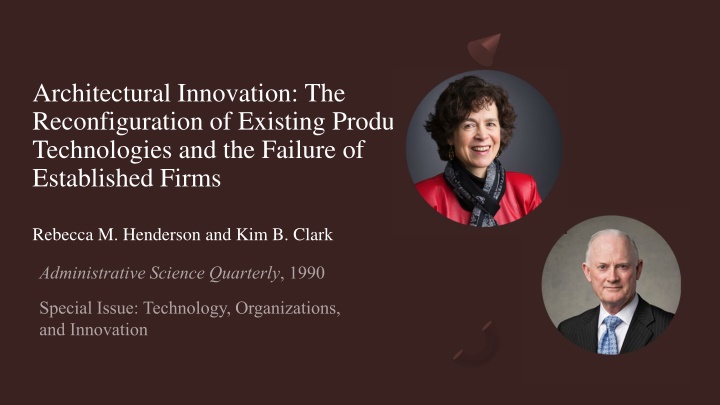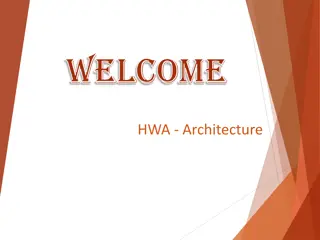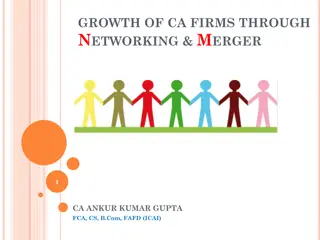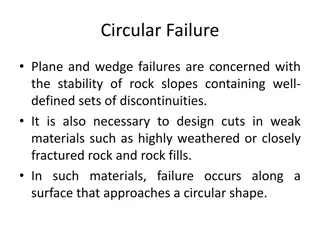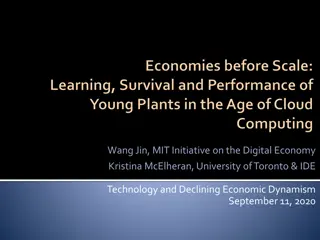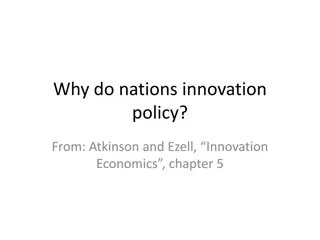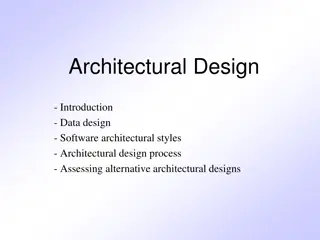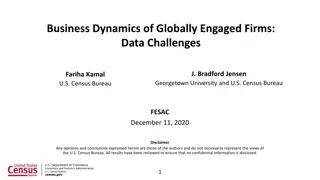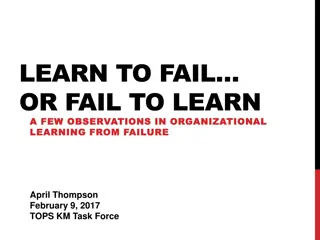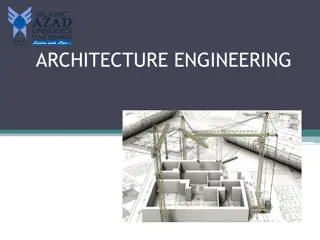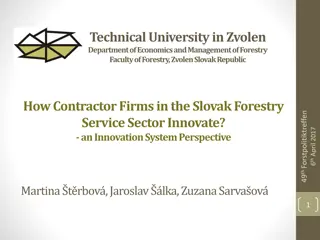Architectural Innovation and Failure of Established Firms
This paper delves into the reconfiguration of existing product technologies and the impact on established firms. It explores how minor innovations can lead to significant competitive outcomes, proposing a framework for defining innovation across product architecture and component knowledge. The analysis distinguishes between incremental and radical innovation, highlighting the challenges and opportunities each presents for firms in adapting to industry changes.
Download Presentation

Please find below an Image/Link to download the presentation.
The content on the website is provided AS IS for your information and personal use only. It may not be sold, licensed, or shared on other websites without obtaining consent from the author.If you encounter any issues during the download, it is possible that the publisher has removed the file from their server.
You are allowed to download the files provided on this website for personal or commercial use, subject to the condition that they are used lawfully. All files are the property of their respective owners.
The content on the website is provided AS IS for your information and personal use only. It may not be sold, licensed, or shared on other websites without obtaining consent from the author.
E N D
Presentation Transcript
Architectural Innovation: The Reconfiguration of Existing Product Technologies and the Failure of Established Firms Rebecca M. Henderson and Kim B. Clark
Existing models that rely on the simple distinction between radical and incremental innovation offer little insight into why seemingly minor or straightforward innovations can have great competitive consequences. Research Objective This paper seeks to develop and apply a model to explain this phenomenon.
The framework for defining innovation developed by the authors proposes four categories of innovation. These categories are based on whether the innovation relates to a product s architecture knowledge, components knowledge, or both. A framework for defining Innovation Component knowledge refers to the knowledge about each of the core design concepts and the way in which they are implemented in a particular component. For example, knowledge about how to design a fan motor. Architectural knowledge refers to the knowledge about the ways in which the components are integrated and linked together into a coherent whole. For example, how the different parts of a fan work together.
Types of Innovation Incremental innovation introduces relatively minor changes to the existing product exploits the potential of established design reinforces the competitive positions of established firms such as the improvements in blade design or the power of the motor Radical innovation based on entirely new engineering and scientific principles creates great difficulties for established firms to adapt/change organizational capabilities opens doors to the successful entry of new firms or redefinition of an industry such as moving to central air conditioning rather than using a fan
Types of Innovation Modular innovation/Component innovation improving a product s components without significant impact on architecture can be a source of competitive advantage such as simply replacing an analog dialing device with a digital one Architectural innovation innovations that change how the components of a product are linked together using part of the firm s existing knowledge while disrupting other parts simultaneously. Firms often struggle to discern which knowledge remains useful and which is not this is the kind of innovation that was faced by Xerox and RCA
The Evolution of Component and Architectural Knowledge In the early stages of a technology s history, before the emergence of a dominant design, organizations must actively develop knowledge about alternate components and knowledge of how these components can be integrated Architectural Knowledge. With the emergence of a dominant design, firms move from focusing on architectural knowledge to component knowledge. New component knowledge becomes more valuable to a firm than new architectural knowledge because competition between designs revolves around refinements in particular components. Successful organizations, therefore, switch their limited attention from learning a little about many different possible designs to learning a great deal about the dominant design. Routines, communication channels, information filters, and problem-solving strategies play an important role in managing architectural knowledge.
Challenges posed by Architectural Innovation First, established organizations require significant time (and resources) to identify a particular innovation as architectural, since architectural innovation can often initially be accommodated within old frameworks. Radical innovation tends to be obviously radical -- the need for new modes of learning and new skills becomes quickly apparent. In the case of architectural innovation, the core concepts of the design remain untouched, and the organization may mistakenly believe that it understands the new technology. This is because managers can put the bad news or the unexpected new information back into the patterns with which they are familiar, rather than considering whether new architectural knowledge is needed.
Challenges posed by Architectural Innovation Second, the second major source of problems is the need to build and apply new architectural knowledge effectively. Simply recognizing that a new technology is architectural does not provide an established organization with the architectural knowledge it needs. It must first switch to a new learning mode: It must change its orientation from refinement within a stable architecture to an active search for new solutions. Many organizations encounter difficulties in their attempts to make this type of transition. New entrants, with smaller commitments to older ways of learning about the environment and organizing their knowledge, often find it easier to do so. Then, invest time and resources in learning about the new architecture, and established firms may prefer modifying existing channels, filters, and strategies over incurring the high costs and friction of creating new ones. However, identifying which elements need to change is challenging, and using old but modified tools to develop new products can lead to significant issues. Architectural innovation can have significant competitive implications. Established firms may see it as an incremental extension or underestimate its impact, while new entrants can exploit its potential more effectively
Empirical Study The data were collected during a two-year, field-based study of the photolithographic alignment equipment industry. Photolithographic equipment has been shaken by four waves of architectural innovation, each of which resulted in a new entrant capturing the leadership of the industry.
Reasons for the Failure of The Kasper Saga Kasper s failure to understand the challenge posed by the architectural innovation. The old architectural knowledge that Kasper had developed through its experience had the effect of focusing its attention away from the new problems caused by architectural innovation, making it hard to understand these changes. Misinterpreting architectural innovation as incremental innovation. In this case, Kasper Saga failed to develop new architectural knowledge, leading to its failure.
Discussion and Future Research Assume that organizations are boundedly rational >> Explore ways in which the firm s history and culture affect the formulation of architectural and component knowledge Assume that architectural knowledge embedded in routines and channels becomes inert and hard to change. >> Explore the extent to which this can be avoided explore the extent to which it is a useful tool for understanding the impact of innovation in other industries. An architectural innovation s effect depends directly on the nature of organizational learning >> What drives effective learning about new architectures and how learning about components may be related to it? An understanding of architectural innovation would be useful to discussions of the effect of technology on competitive strategy.
